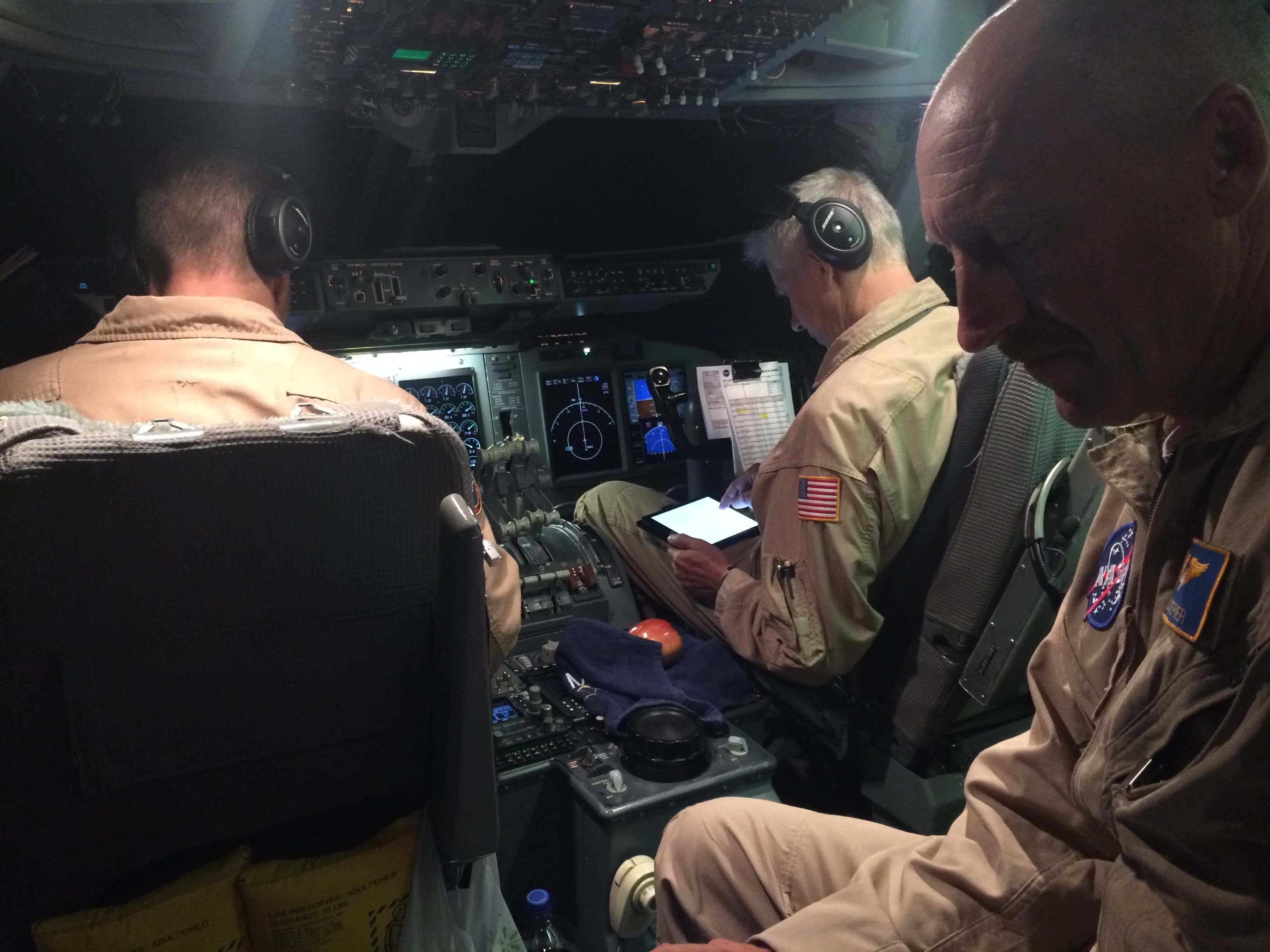June 21, 2017
It was basically a straight line from Palmdale, CA (outside Los Angeles) to Honolulu, Hawaii: a lot more relaxed than a normal SOFIA science flight, which has all those legs and turns enable doing the astronomy (the telescope is only located on one side of the plane, combined with targets rising in the east/setting in the west).
I got a chance to hang out in the cockpit and spent time with Steve, the Flight Engineer, who walked me through the small changes pilots Dean and Paul needed to do from time to time. There was a kind of camaraderie among these three men, who yes, have flown together, but not flown a lot together recently, as Steve lives in Denver working for United, and Dean and Paul are off flying ER2s and other NASA “airframes.” They all knew how to do their jobs and kept each other vigilant on monitoring the many dials, doing tweaks to elevation, turning on the engine heaters by hand (as a known precaution) for 1 minute every 30 minutes (unless the engine oil gets to -5 C and then its 1 minute every 10 minutes), refreshing their knowledge about the weather, etc. etc. Apparently when you do most of your flying out of the desert, you get used to “no weather” and where we’re headed down south (to New Zealand), we’ll get “some weather.”

The rest of my fellow passengers are a mixture of mechanics, software engineers, telescope operators, and avionics technicians (techs). I learned from my seatmate, Darrell, about how the wings of the 747SP uses hydraulics rather than screw types for adjusting the lift. This was a more efficient design that enables long-haul operations (go to Europe from the US in one flight). I had remarked that when I fly on airlines, depending on the “airframe” sometimes as part of the pilot’s checklist you can hear the whirring noises in the wings, which Ken called out to be the screw adjustments, which are not present in all “airframes.” Not everyday you get to fly next to folks who know how to build aircraft.
